Hinges are a very useful but somewhat difficult mechanism to 3D print. Read on to find some of the best 3D printed hinge designs!
You can 3D print many different types of functional parts, including compliant mechanisms, gears, and rack and pinions. Another surprisingly printable type of part is hinges.
Hinges are great for making opening doors, containers, bag clips, chain links, and more. There are all sorts of different hinges for different applications, and 3D printing enables you to create custom-fitted parts that are perfect for your projects.
Hinges, even print-in-place options, usually comprise three main components, including the two articulating pieces and a pin. The former rotate around the latter to create the door-swinging-like motion. 3D printing allows you to create print-in-place hinges that don’t require any assembly, but these are more challenging to print.
Though they’re out of the scope of this article, living hinges are another type of 3D printable hinges. Living hinges aren’t like typical mechanical hinges; they’re thin sheets of material that can bend to function as a hinge.
Here, we’ll present the best 3D printable hinges, including both universal hinge designs and parts featuring hinges. Before we get into the models, though, we’ll first review some considerations to help you determine which hinge design is best for you and how to print it right.
Considerations
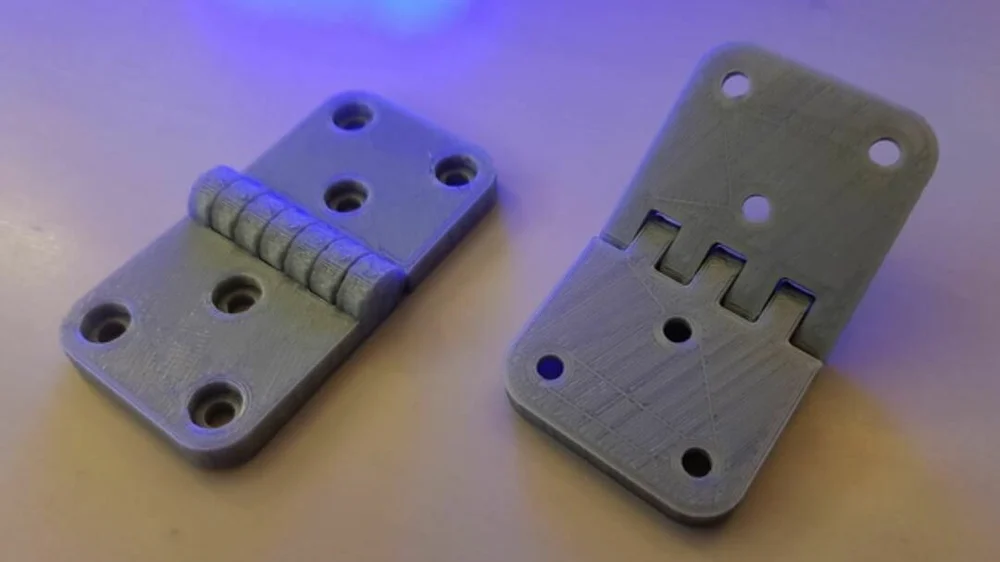
There are many different considerations when it comes to choosing and 3D printing a hinge. In this section, we’ll go over a couple of important factors to think about.
Design Considerations
Before you get to printing, you need to think about the 3D model:
- Application-specific: First, you should choose a hinge that suits your project and provides enough mounting holes to securely attach to both surfaces. Also, make sure you pick a hinge that offers an adequate degree of freedom; some hinges can only open a certain amount.
- Adjustments: Second, make sure that the hinge is the right size and shape. If it’s not, consider slightly remodeling the design to make the hinge fit your purpose.
Printing Considerations
Once you’ve picked out your model, you’ve got to print it. As hinges have multiple moving parts, 3D printing them is more difficult because all of the parts have to work together smoothly.
- Dimensional accuracy: The most essential printing factor that can help ensure a smooth-moving hinge is dimensional accuracy, which has to do with the accuracy and precision of the print. You should also make sure you scale the hinge appropriately to fit whatever you want to use it for.
- Material: You should also think about how much stress your 3D printed hinge will be under. While metal hinges usually don’t have too much of a problem holding up heavy objects, like a door, 3D printed plastic hinges could snap under the strain. If you’re using the hinge to hold open anything more than a few pounds, consider using a durable material like PETG or ABS.
- Print settings: On a similar note about part strength, try using a larger layer height and a 100% infill density (or as high as you can go) to further enhance the strength of your model. Increasing the nozzle temperature can also make parts less brittle, but don’t increase it too much, as too hot a nozzle can lead to dimensional accuracy issues.
- Layer strength: Don’t forget about print orientation, as this can affect the direction of strength. For most cases, printing the hinge with the side pieces layer flat typically yields more strength, but printing the hinge straight up usually makes the hinge easier to move.
Now that you understand some factors to consider about 3D printed hinges, let’s get to the options!
HINGES
In this section, we’ll go over a few models of open-use hinges that will work in many cases or can be customized to fit your needs.
Parametric
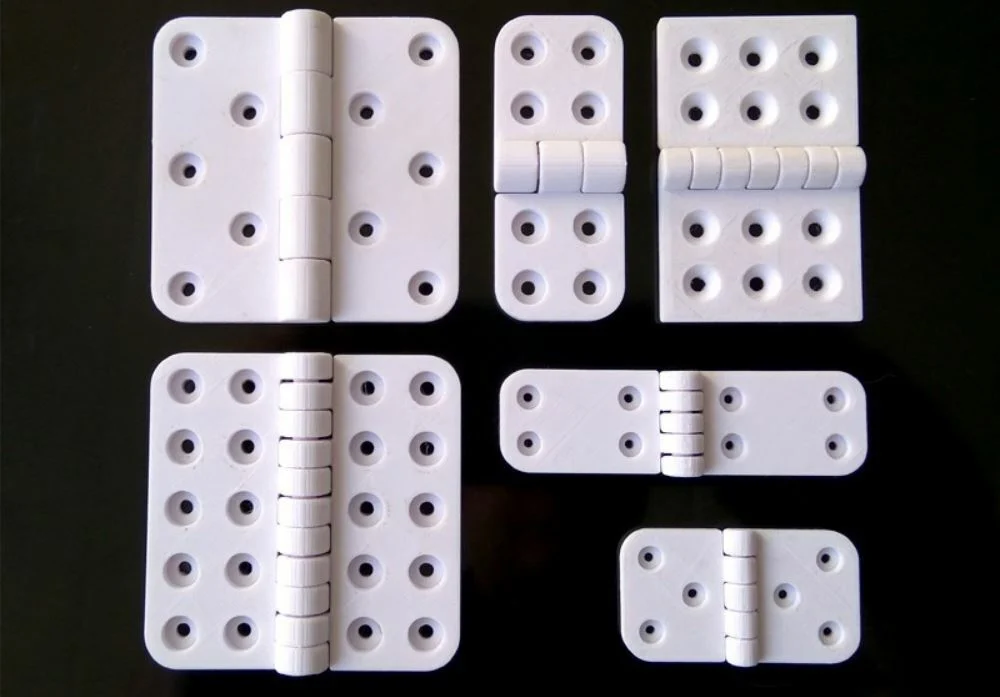
First up, designed in OpenSCAD, this parametric hinge is a print-in-place option that follows a pretty basic structure. This hinge is very versatile because you can adjust a few different elements of the design, such as the size and number of mounting holes on the hinge, through Thingiverse’s Customizer app. Customizing your hinge allows you to make the hinge fit any of your needs and work with any hardware (e.g. screw size).
While not every customized hinge design (found in the Remix section) is the same, they’re all very similar, so the same print settings should work for most hinges. One maker posted a great image of their customized hinge and listed settings including a 0.15-mm layer height and a 20% infill density with neither a raft nor support structures.
- Who designed it? rohingosling
- How printable/popular is it? This customizable parametric hinge has 27 posted Makes with 1,379 Remixes. As so many people have customized this design and printed it, you can too!
- Where to find it? Thingiverse
Modular
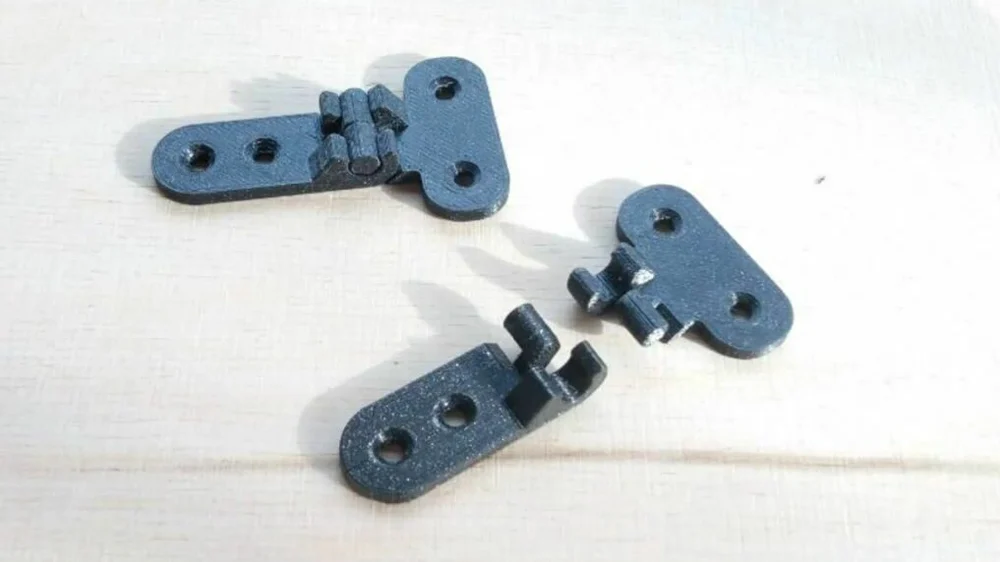
This modular hinge is a set of two hinge models that can easily link together to form a functioning hinge. While a few seconds of assembly is required for this option, this design may be easier to work with if you’re having problems with the print-in-place designs. You may also find this hinge useful in some situations because the two side parts of the hinge form different shapes (one is long and one is wide, forming a “T” structure when joined).
The creator of this modular hinge listed that the print took almost an hour and a half, consuming around 8 grams of filament. They also mentioned that they printed the hinge in PET filament, using a 0.15-mm layer height.
- Who designed it? JCW
- How printable/popular is it? This modular hinge has two Makes and is included in 22 PrusaPrinters collections.
- Where to find it? PrusaPrinters
Standard
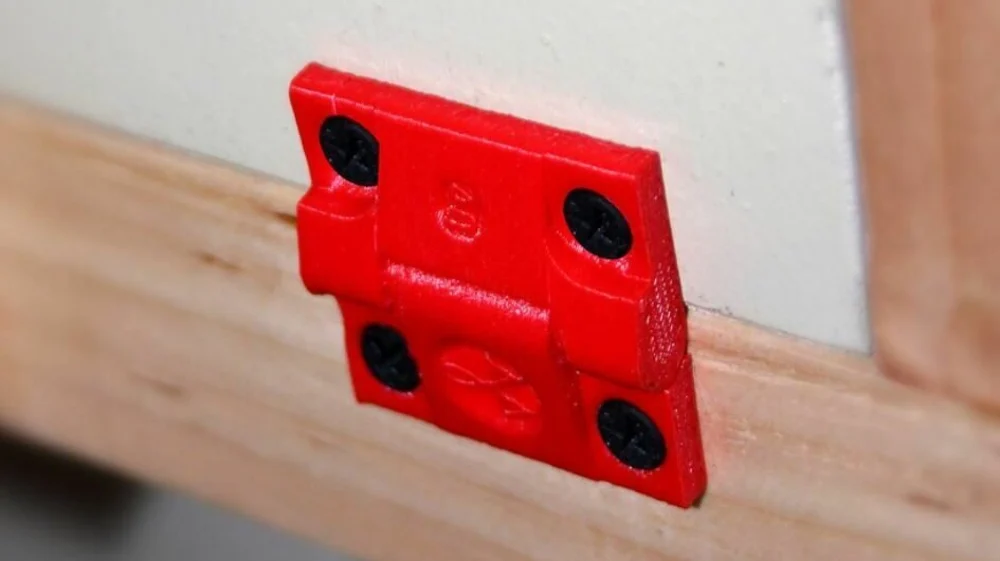
This hinge follows a very basic design, making it very versatile. The hinge has two screw holes on each side piece, allowing you to securely mount the hinge for many applications, like a cabinet door. The original hinge measures 40 x 40 mm in area, but the designer notes that you can scale the hinge up or down, and no issues should occur.
The creator of this hinge design suggests printing the hinge with the side pieces perpendicular to the build plate to make the motion of the hinge smoother. They also recommend printing the hinge in PLA or PETG rather than ABS or nylon because the latter two materials are too flexible. A maker on Thingiverse listed that they printed the hinge with a 50-100% infill density and a 0.2-mm layer height with no supports.
- Who designed it? J-Max
- How printable/popular is it? This standard hinge design has 35 recorded Makes, 3 Remixes, and over 30,000 downloads on Thingiverse.
- Where to find it? Instructables (instructions), Thingiverse (downloadable design)
Sliding
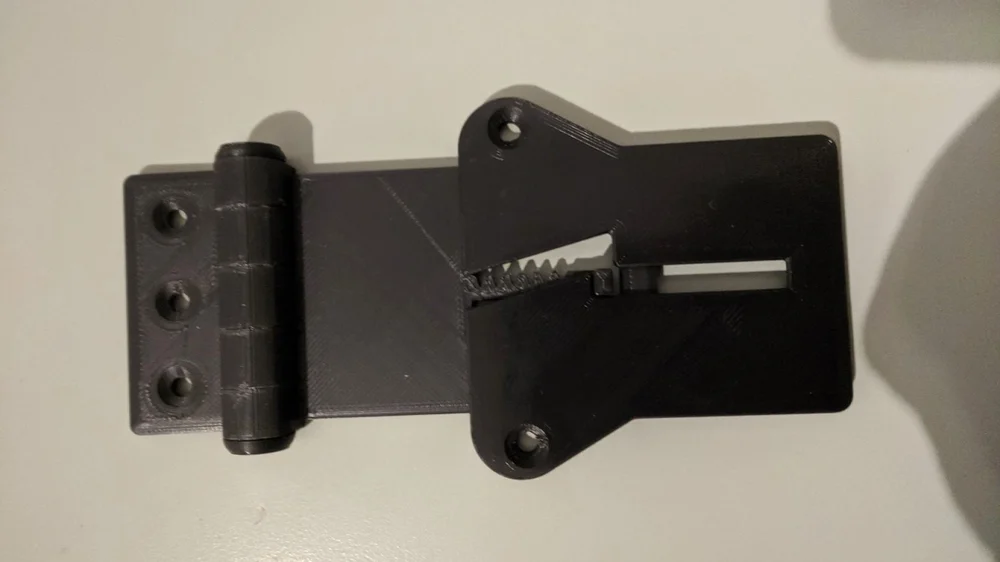
This sliding hinge is a special type of hinge that allows one of the side pieces to extend before the hinge pivots. According to the designer, this was done to enable the hinge to have more clearance to swing. The hinge is pretty thin, can open a maximum of 90 degrees, and, of course, prints in one piece.
The designer printed the model with a 0.16-mm layer height and used a 30% infill density. They also stated that they printed the hinge in PLA and used neither a raft nor supports.
- Who designed it? ecarlson88
- How printable/popular is it? This sliding hinge is featured in four collections on PrusaPrinters.
- Where to find it? PrusaPrinters, Thingiverse
Reversible
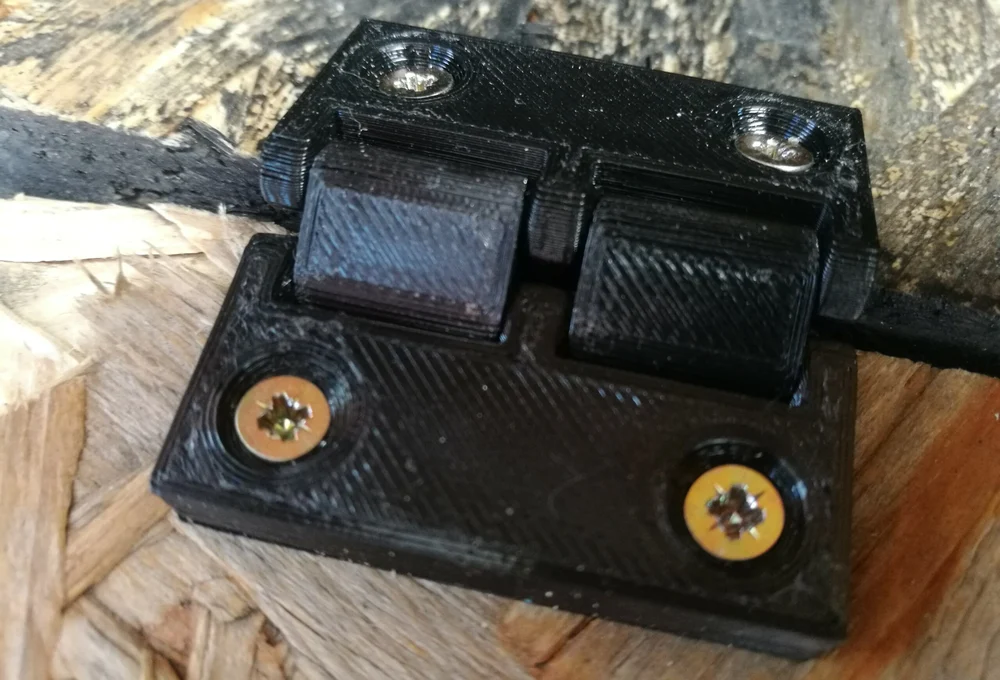
This reversible hinge is a remarkable design that offers a wider degree of freedom by allowing the side pieces to swing in both directions. The hinge works by having two pivot axes (one for each side piece), so it’s almost like two hinges in one. The design was remixed from another reversible hinge design but added screw holes to allow you to mount the side pieces to other panels, like a door.
Although the designer didn’t include any printing tips, one maker showed off a great print of the reversible hinge and listed a few of their own settings: a 0.2-mm layer height, 30% infill density, no supports, and no raft. They also listed that they printed the hinge in PETG filament, which makes sense given this material’s rigidity.
- Who designed it? wd73_
- How printable/popular is it? This reversible hinge has 32 posted Makes, 8 Remixes, and close to 44,000 downloads.
- Where to find it? Thingiverse
PARTS FEATURING HINGES
In this section, we’ve listed a few popular designs that include integrated hinges but aren’t super versatile. These designs are great showcases of how 3D printing can be used to integrate hinges into designs easily.
Bag Clip
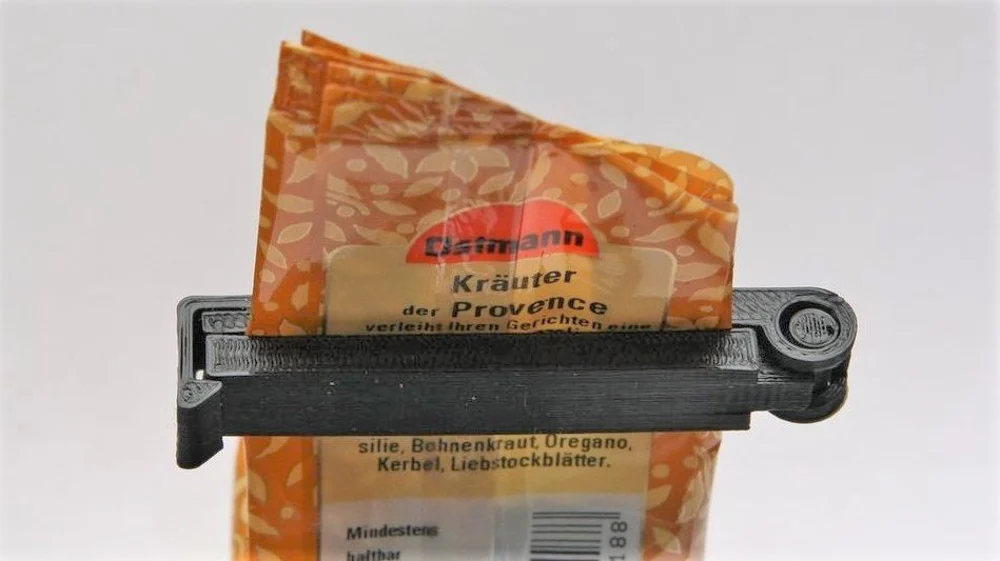
After opening a bag of chips, bread, or similar food items, it’s best to keep the bag closed to ensure no air causes the food to go stale. While many people use the classic bag-roll method, a bag clip is more effective and reliable for keeping air out of your food bags.
This 3D printable bag clip uses a hinge mechanism and a notch at the end to keep the hinge latches shut on a bag. You can choose from three available sizes (65, 85, and 125 mm) to ensure the clip fits on your bag.
While the designer didn’t provide any printing tips, one maker printed the design with a 40% infill density and a 0.2-mm layer height.
- Who designed it? MasterFX
- How printable/popular is it? This bag clip design has 291 recorded Makes, 33 Remixes, and over 353,000 downloads! Given how many users have successfully printed this clip, we suspect you should also be able to print it.
- Where to find it? Thingiverse
The Coolest 3D Printed Kitchen Gadgets of 2022
Cable Chain
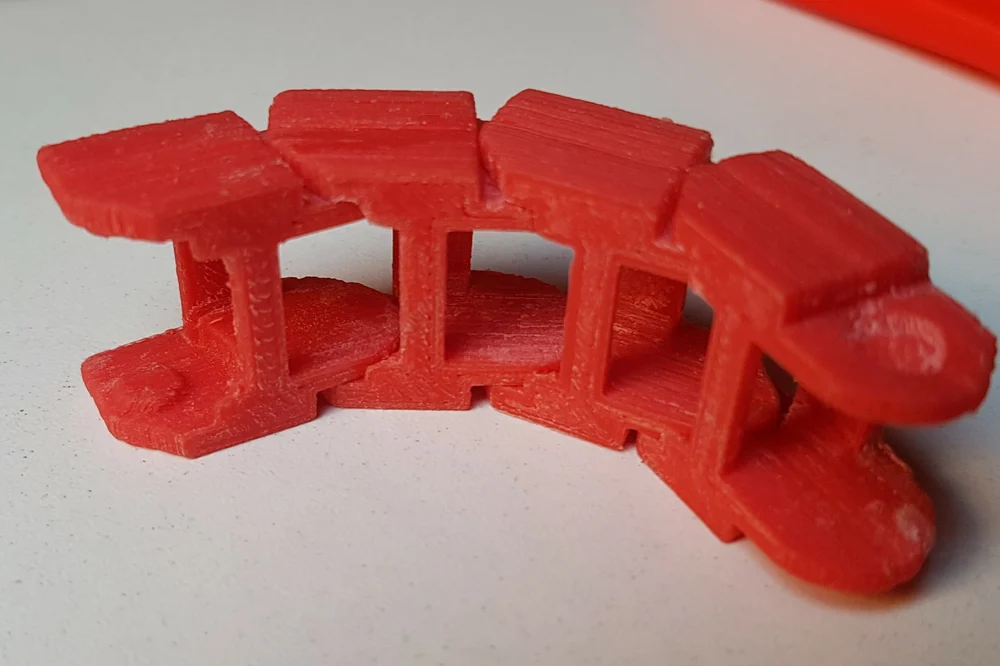
Cable chains are a great way to organize your wires on a 3D printer, computer setup, or another environment with many wires. The underlying mechanism on many cable chains is hinges that connect each chain link and allow them to move up and down slightly to bend with the flow of the wires. You can print as many chain links as you want, and their small integrated hinges should snap together.
Although the design’s creator didn’t list any printing advice, one maker noted that they printed the design in PLA with a 65% infill density, a 0.2-mm layer height, and with supports activated but no raft.
- Who designed it? ModelStation
- How printable/popular is it? This cable chain project has 177 recorded Makes, 108 Remixes, and close to 140,000 downloads!
- Where to find it? Thingiverse
Box
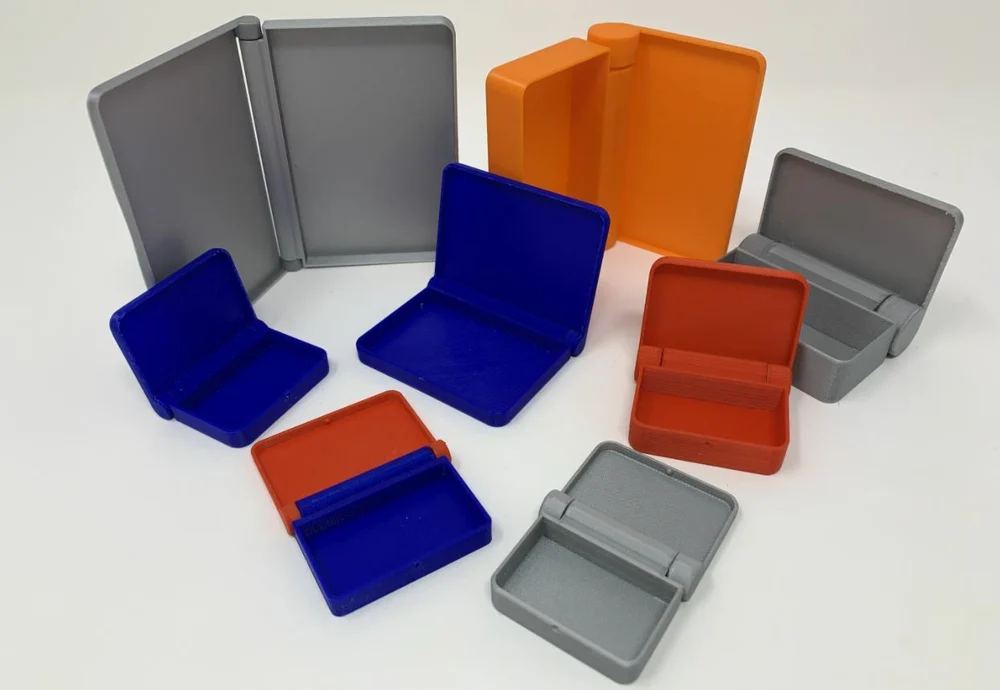
Designed in Autodesk Fusion 360, this parametric box is another great design with a hinge. The container can be opened and closed using its hinged lid, making it great for storing small items like keys or a wallet. You can also follow the guide (or download the available F3D file) to make your own box or adjust its parameters.
A community maker posted a great print of the box and listed that they printed the model on an Ender 3 in PLA, but beyond that, no print settings have been shared.
- Who designed it? gzumwalt
- How printable/popular is it? This hinged box design has over 125,000 views with nearly 34,000 downloads and one community print. The popularity of the design suggests that it’s possible to print.
- Where to find it? MyMiniFactory
Folding Coat Hanger
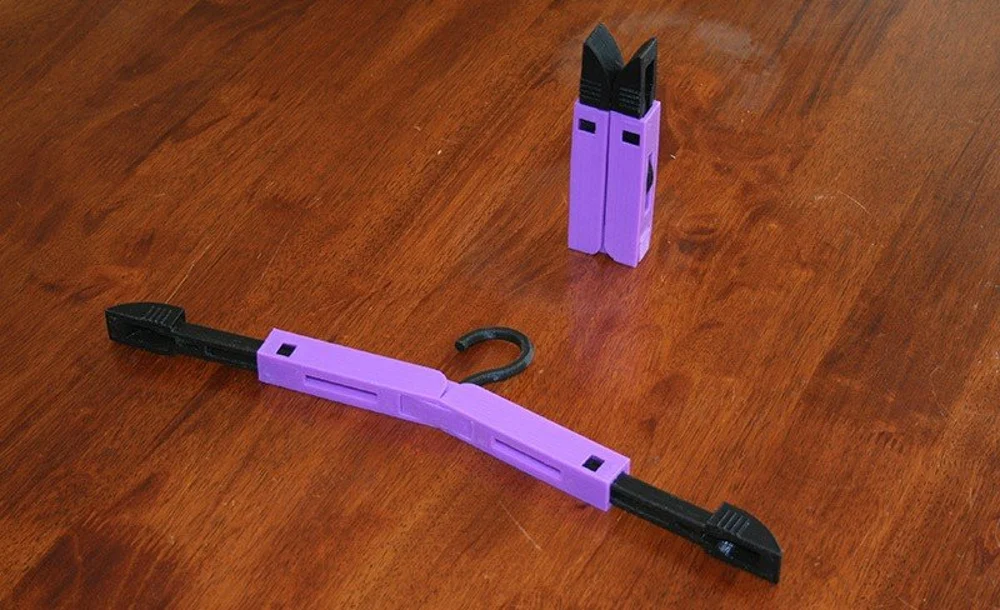
Hanging up clothes isn’t the most fun activity in the world, but it does help keep your closet (and the rest of your bedroom) organized. This folding coat hanger is composed of eight 3D printable pieces, features two integrated hinges, and can fold up into a small package that’s easily portable.
The designer suggests printing the hook for this hanger with a 0.1-mm layer height and 2-mm brim but without supports. Similar settings are recommended for the other parts but with a different brim width. One maker successfully printed the design in PLA using a 0.16-mm layer height and a 20% infill density .
- Who designed it? tilden
- How printable/popular is it? This design has 12 posted Makes and over 11,000 downloads.
- Where to find it? Thingiverse
Raspberry Pi Case
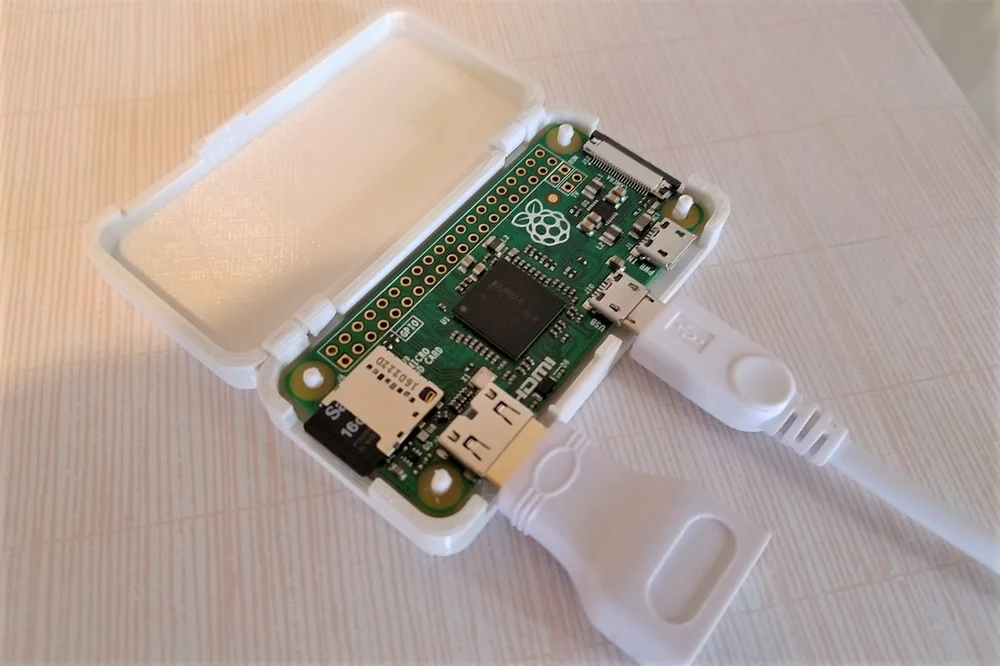
Lastly, this Raspberry Pi case is a great way to house your mini computer board while testing your 3D printer’s capabilities. The one-piece case is meant to house the Raspberry Pi Zero and features two hinges that allow you to open and close the lid to access your Pi board quickly. The design has holes for the Micro-USB and HDMI ports, the microSD card slot, and even an opening for a Pi camera.
The designer listed that they printed the case with a 30% infill density and used a “medium” resolution, which probably means around 0.2-mm layer height. They also stated that they used no supports and that the case can be printed in any material.
- Who designed it? Superrei
- How printable/popular is it? This one-piece case for the Pi Zero has 46 recorded Makes, 18 Remixes, and over 40,000 downloads.
- Where to find it? Thingiverse
50 Cool Custom Raspberry Pi Cases to 3D Print
Source: https://all3dp.com/2/3d-printed-hinge-great-curated-models-to-3d-print/